

BOEING 757 NAVIGATION + EFB (ATA 34 + 46 ) MODIFICATIONS (167)
Introduction of ADS-B Out as per CS-ACNS
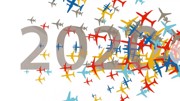
Automatic Dependent Surveillance-Broadcast (ADS-B) is a system broadcasting, without the need for action from the pilot or any request from ATC, that provides an enhanced set of aircraft surveillance data to Air Traffic Management (and potentially to other airplanes)
B737 NG SBAS GNSS Aircraft Integration by Fokker Services



Overview
Fokker Services offers a certified solution for the integration of Satellite-Based Augmentation Systems (SBAS) and Global Navigation Satellite Systems (GNSS), supporting modern navigation, surveillance, and performance-based operations. This upgrade ensures compliance with global mandates while delivering operational efficiency and precision.
B737 NG LPV (Localizer Performance with Vertical Guidance) Solution



Overview
Localizer Performance with Vertical Guidance (LPV) enables precision-like approaches down to CAT I minima—without requiring any ground-based ILS infrastructure. LPV relies on Space-Based Augmentation Systems (SBAS) such as EGNOS (Europe), WAAS (U.S.), or other regional systems. This makes it an ideal upgrade for operators seeking improved accessibility, operational flexibility, and compliance with evolving navigation mandates.
Traffic Alert and Collision Avoidance System (TCAS) 7.1



The Traffic alert and Collision Avoidance System (TCAS) is introduced to reduce the risk of mid-air collisions or near mid-air collisions between aircraft. When TCAS II version 7.1 is implemented the probability of mid-air collisions will be reduced significantly. *
The introduction of TCAS change 7.1 software is available for Fokker 50 (SBF50-34-072), Fokker 70 and Fokker 100 A(sbf100-34-105/110) as well as for other types of aircraft like Airbus A318, A319, A320, A321, Boeing 737 series, 757, 767, Bombardier Dash 8 and CRJ. CERTIFICATIONS | Fokker Services Group | Fokker Services Group
Systems from several major vendors are covered in these STS's.
Installation of a Talon Aerospace Anti-Collision Light
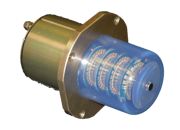
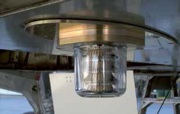
The 1st FAA Certified LED Anti-Collision Light for Commercial Aircraft
Dependability, Weight Savings and Inventory Reduction
The Talon Aerospace anti-collision centerline/fuselage strobe light is designed to replace all incandescent based centerline lights installed on Boeing, Airbus, McDonnell/Douglas, Embraer, Bombardier and other regional aircraft.
During retrofit the operator will purchase an install kit, which includes an adaptor and harness assembly. On airframes that have accessibility provisions inside the interior the upper centerline light allows removal from inside the cabin. The harness and adaptor will last the lifetime of the airframe.
Talon and Proponent
Proponent is the exclusive global distributor of all Talon Aerospace products. This relation provides customers with the latest generation of LED lights.
Proponent is the new identity representing Kapco Global and Avio-Diepen as one united company, and the unique capabilities that the new organization brings to the aerospace market. With extensive experience in supporting the MRO, OEM and airline markets, our organization offers innovative inventory and supply chain management solutions to OEM and aftermarket customers.
Boeing 757 ADS-B Upgrade
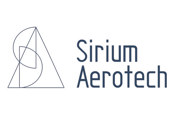

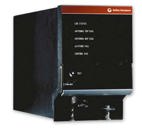
In recent years most countries have issued mandates requiring aircraft to be equipped with ADS-B Out equipment in order to fly in most controlled airspace. By the end of 2023 almost all mandates will have entered into force including US, EU, Australia, Canada, China, Colombia, India, Indonesia, Mexico, South Africa...
ADS-B is a surveillance technology in which an aircraft periodically reports GNSS position together with aircraft specific information such as Flight ID, Aircraft category, etc. This information is received by ATC or other aircraft and can be used to enhance airspace usage and improve situational awareness.
VHF Antenna products Sensor Systems Inc.

S65-8262-12: All metal communications antenna.
Light weight, low drag in a rugged design package.
Resistant to erosion and impact. DC grounded to provide lightning protection, eliminates "P" static. Hermetically sealed. The antenna is 25% shorter and 30% lighter than the S65-8262-2, but keeps the identical mounting footprint. Other models available with optional internal low pass filtering system to prevent VHF interference to the Global Positioning System (GPS). Total harmonic attenuation greater than 80 dB.
Upgrade TCAS II 7.0 to 7.1 Boeing 757 (all series)
*Since its introduction in Europe in 2000, TCAS II version 7.0 has been the subject of monitoring. In the course of analysing recorded and reported events, many cases were found in which pilots did not respond correctly to the “Adjust vertical speed, adjust” Resolution Advisories (RAs) – the vertical rate was increased rather than reduced.
Additionally, there have also been a number of cases in which TCAS II version 7.0 failed to reverse an RA when two converging aircraft remained within 100 feet. This type scenario would be occur when one aircraft is not following the RA or is not TCAS II equipped and follows an ATC instruction or performs an avoidance manoeuvre based on visual acquisition.
The development of version 7.1 was initiated by EUROCONTROL following the discovery of two safety issues with the current TCAS II version. (*www.eurocontrol.int)
BAE Systems have introduced TCAS II 7.1 across the OEM Fleet Bae146 (all variants), AVRO RJ (all variants) and ATP as well as Boeing 737 series and Boeing 757
Upgrade TCAS II 7.0 to 7.1 - Processor Replacement Boeing 757
*Since its introduction in Europe in 2000, TCAS II version 7.0 has been the subject of monitoring. In the course of analysing recorded and reported events, many cases were found in which pilots did not respond correctly to the “Adjust vertical speed, adjust” Resolution Advisories (RAs) – the vertical rate was increased rather than reduced.
Additionally, there have also been a number of cases in which TCAS II version 7.0 failed to reverse an RA when two converging aircraft remained within 100 feet. This type scenario would be occur when one aircraft is not following the RA or is not TCAS II equipped and follows an ATC instruction or performs an avoidance manoeuvre based on visual acquisition.
The development of version 7.1 was initiated by EUROCONTROL following the discovery of two safety issues with the current TCAS II version. (*www.eurocontrol.int)
BAE Systems have introduced TCAS II 7.1 across the OEM Fleet Bae146 (all variants), AVRO RJ (all variants) and ATP as well as Boeing 737 series and Boeing 757
Fokker Services iPad® EFB modifications for Boeing aircraft


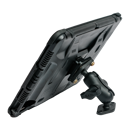
The EFB Solution for iPad® is a very interesting and cost effective way to introduce an installed classified EFB in your cockpit. An EFB is a physical device containing hardware and software that carries flight documentation. The EFB is used by the flight crew on the flight deck during their duties. Fokker Services’ EFB modification has already been installed in more than 1300 aircraft amongst different aircraft types. Our EFB installation is ticking all the boxes and is available for most aircraft types, including Airbus, Boeing, ATR, Bombardier Challenger & CRJ Family, Embraer, Fokker and others. We can support you with all hardware for your power supply (USB-A and USB-C) and iPad mount (adjustable and pivot mount), our product includes an Engineering Bulletin and all related supplements.


